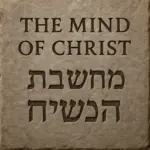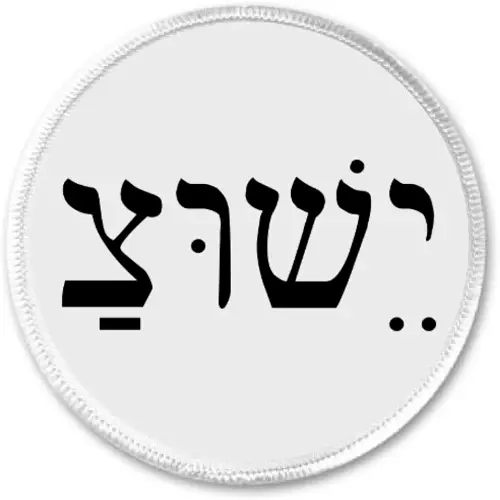Nikola Tesla, the Human Brain, and the Biblical Model of Revelation
Introduction
Nikola Tesla, the brilliant inventor and visionary, once remarked, “My brain is only a receiver. In the Universe there is a core from which we obtain knowledge, strength and inspiration.” This statement, though scientifically controversial, resonates deeply with spiritual traditions that long predate Tesla. Among these, the biblical and Hebraic worldview offers perhaps the most profound harmony with Tesla’s perspective, framing the human mind not as an originator, but as a divine receiver—capable of perceiving divine truth, wisdom, and revelation.
This blog post explores the rich intersections between Tesla’s idea of the brain as a cosmic receiver and the biblical, Hebrew, and mystical traditions that echo the same concept of the divine receiver. From Genesis to the Prophets, from Paul’s letters to the mystical teachings of Kabbalah, we uncover how this ancient idea is more than philosophical—it’s foundational to understanding human purpose, divine communication, and our role in the created order.
The Role of the Divine Receiver
Tesla was no mere tinkerer with wires and currents—his mind constantly roamed the abstract and the infinite. He believed that all matter was alive with frequency and energy, and that the human brain was uniquely designed to tune into these frequencies.
“The day science begins to study non-physical phenomena, it will make more progress in one decade than in all the previous centuries of its existence.”
For Tesla, thoughts did not arise solely from internal computation. Instead, he likened the brain to a radio—an antenna for receiving insight, knowledge, and inspiration from a higher realm. These beliefs place him at the crossroads between science and mysticism, where empirical observation and divine revelation often overlap.
This notion of the brain as a spiritual receiver is not without precedent. In fact, it mirrors much of what is found in the biblical tradition and Jewish mysticism.
Genesis and the Breath of Life
“Then the Lord God formed man of the dust of the ground and breathed into his nostrils the breath of life; and man became a living soul.” (Genesis 2:7)
This passage introduces the Hebrew term nishmat chayim—”breath of life.” The idea is that Adam became animated not just with breath, but with the divine spirit itself. He was not simply made alive—he was made aware, spiritual, and responsive to the voice of God.
The Hebrew root neshamah is closely related to navi, or prophet—one who receives divine speech. Man, then, is not merely animated but inspired, receptive to the breath and words of the Creator. This is the first biblical suggestion that humanity is meant to receive, not generate, ultimate wisdom.
Job and the Spirit of Understanding
“But there is a spirit in man: and the inspiration of the Almighty giveth them understanding.” (Job 32:8)
This verse clearly articulates the source of human understanding: not intellect alone, but the “inspiration” or “breath” of God. The Hebrew word here, neshama, implies that all true comprehension flows from a divine origin.
This is directly in line with Tesla’s vision. The mind, left to its own devices, is limited. But when connected—”tuned”—to a higher source, it becomes the means through which divine knowledge is apprehended.
The Prophets: Divine Transmission
In both the Old and New Testaments, the prophets did not speak their own minds—they spoke what they heard.
“The word of the Lord came to me, saying…” (Jeremiah 1:4)
Over and over, Scripture records this phrase. Prophets were human receivers of divine data, much like Tesla’s conceptual model of the brain. In fact, the Hebrew term for prophet, navi, means “one who is called” or “one who bubbles forth”—a vessel through which the Spirit speaks.
From Moses to Isaiah, from Ezekiel to Paul, the message is the same: they did not originate wisdom—they received it. They were attuned.
Paul and the Mind of Christ
The Apostle Paul, in 1 Corinthians 2:16, offers a remarkable insight:

“But we have the mind of Christ.”
Paul elaborates that human wisdom is insufficient to understand the mysteries of God:
“The Spirit searches all things, even the deep things of God.” (1 Corinthians 2:10)
This ties directly into Tesla’s assertion of a universal core of knowledge. Paul saw the Holy Spirit as the agent of transmission, giving believers access to the divine mind. The believer becomes like an antenna, receiving signals from the Kingdom of God.
Kabbalah and the Tree of Life
Jewish mysticism offers an even more structured view of this divine transmission through the concept of the Tree of Life (Etz Chaim). The tree represents ten sefirot, or emanations, through which divine light (Or Ein Sof) flows into the world.
Two of the highest sefirot are:
- Chokhmah (Wisdom)
- Binah (Understanding)
These correspond to the left and right hemispheres of the brain and are the first filters of divine energy into human consciousness. According to Kabbalah, the human soul descends through these emanations and remains connected to its source.
In this model, the human mind is not self-illuminated. It is like a lamp plugged into a power source—it can only shine when connected. Tesla’s insights, though not framed in Hebraic terms, align almost perfectly with this mystical structure.
The Hebrew Alphabet: Vessels of Energy
In ancient Jewish thought, the Hebrew alphabet itself is seen not merely as a linguistic tool but as a spiritual technology. The 22 Hebrew letters are believed to be the building blocks of creation, the DNA of reality.
“By the word of the Lord the heavens were made, and by the breath of his mouth all their host.” (Psalm 33:6)
Tesla’s belief in frequency and vibration resonates here. Each Hebrew letter carries a unique frequency, and it is through the combination of these letters that divine energy is transmitted and creation is sustained. Kabbalists teach that meditating on or reciting these letters aligns the human soul with divine frequency—once again reinforcing the idea of reception.
Modern Science Meets Ancient Wisdom
Although mainstream neuroscience does not treat the brain as a literal antenna, some cutting-edge research supports the idea of quantum consciousness or non-local cognition—ideas that brush up against Tesla’s theories.
In the fields of neurotheology and consciousness studies, many scientists now believe that the mind is more than the brain—a field, an emergent property, or even a receiver of a higher reality.
This does not prove Tesla’s theory, but it does open the door to the ancient wisdom of the Bible, which has long asserted that man is a vessel of divine interaction.
Conclusion: Awakening the Receiver
Tesla’s legacy is not merely one of invention but of inquiry. His willingness to explore the boundary between the seen and unseen reflects a profoundly biblical view of the human being. According to Scripture and ancient Hebrew tradition, we are not self-made nor self-sufficient. We are receivers, designed to commune with the Creator, to tune into His wisdom, and to reflect His light.
The breath of life given to Adam was not just oxygen—it was purpose, spirit, and signal. The prophets were not innovators—they were vessels. The mind of Christ is not earned—it is bestowed. And the Tree of Life is not myth—it is a blueprint.
Tesla may have used the language of energy and frequency, but the Bible has long spoken the language of Spirit and Light. And in the marriage of both, we find an astounding truth:
We were designed not to invent truth, but to receive it.
Image Note: The accompanying image shows a radiant human figure receiving divine Hebrew letters through the Tree of Life into the illuminated brain. It is a powerful visual of Tesla’s belief and the biblical principle of divine inspiration intersecting—ancient wisdom through modern eyes.
Tags: Nikola Tesla, Biblical Inspiration, Hebrew Mysticism, Tree of Life, Kabbalah, Divine Revelation, Spiritual Wisdom, Ruach, Neshamah, Chokhmah, Brain as Receiver
Discover more from Master Yahuah Messiah
Subscribe to get the latest posts sent to your email.

